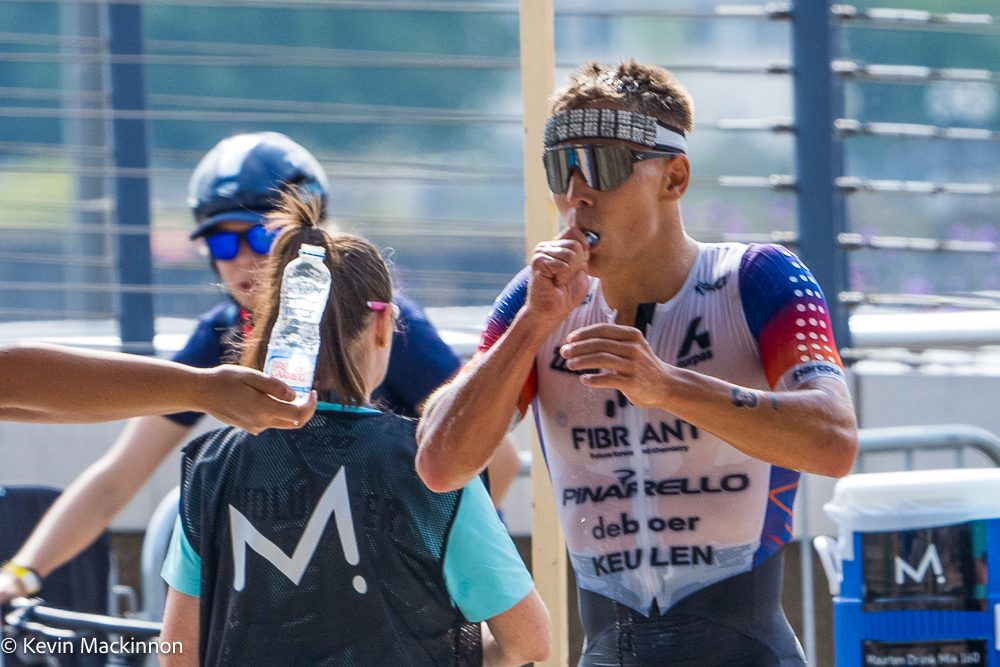
Triathletes participating in long-course triathlons face a unique set of nutritional challenges as they push their bodies to the limits. In recent years, the landscape of nutrition in long-course triathlon has evolved, driven by scientific research, technological advancements and the recognition by top athletes that nutrition can make or break long-course racing. From fine-tuning carbohydrate intake to embracing personalized hydration strategies, let’s delve into nutrition trends shaping the world of long-course triathlon.
1. Higher carbohydrate consumption
One of the foundational principles of endurance nutrition is the importance of carbohydrates as a primary fuel source for sustained energy production. In long-course triathlons, athletes are increasingly adopting higher carbohydrate intake strategies to support their energy demands during prolonged exercise. With recommendations exceeding 90 grams of carbohydrates per hour, athletes are opting for higher carb drink mixes and higher carb gels to meet these needs while minimizing GI distress and keeping logistics of carrying all that fuel simple. Some research suggests that utilizing different carbohydrate sources (e.g., a 2:1 ratio of glucose: fructose) can help meet these higher needs. Many athletes are also experimenting with product innovation such as Maurten’s hydrogel. Hydrogel works by encapsulating carbs in a hydrogel matrix, which forms a gel in the stomach that allows for a slower and more sustained release of energy. This can be helpful for maintaining energy as well as reducing GI distress, but not everyone enjoys the taste and texture. It’s important to practice the components of your race plan in some of your longer training sessions and ideally in some less important races at “race pace” to see how your body reacts to the plan and adjust as needed.
2. Personalized hydration and sweat testing
Hydration plays a critical role in maintaining performance and preventing dehydration-related issues during long-course triathlons. Recognizing the individual variability in sweat rates, electrolyte losses and fluid needs, athletes are turning to personalized hydration strategies informed by sweat testing. Sweat testing is relatively simple; it involves recording a pre- and post-training weight, while keeping track of fluids consumed, the workout duration and then calculating the volume of fluid lost per hour as a baseline for figuring out the goal quantity of fluid to drink per hour. Sweat rate is highly variable in different weather conditions, so it should be re-tested in some key training sessions with similar predicted weather to race day. Sweat composition testing is a bit trickier as access to evidenced based testing methods can be harder to come by, but this is an area with a lot of innovation, so keep an eye on newer testing methods. A sports dietitian can help you navigate the space of testing both your sweat rate and sweat composition. By quantifying sweat composition and rates, athletes can tailor their fluid intake, electrolyte supplementation and hydration plans to align to their specific requirements, optimizing performance and minimizing the risk of dehydration or hyponatremia.
10 Hot topics in the world of nutrition right now
3. Periodized macronutrients
Periodization, a concept commonly applied to training programs, has now extended to nutrition planning in long-course triathlon over a yearly cycle. Athletes are adopting periodized macronutrient approaches that align with their training phases, race goals and metabolic demands. The macronutrient with the greatest variability to training volumes is carbohydrate, and, in general, the more volume you are doing, the more carbohydrates you need. Adjusting macronutrients to match training volumes can help, especially in peak training and racing season as well as lesser training volume times when athletes may have body recomposition goals. Periodization can help you adjust your nutrition goals to the training and health goals you have for that season.
What triathletes can learn from Tour de France riders about nutrition
4. Moving on from diet trends
Whether this is a sports dietitian’s dream or indeed reality, it seems that there are more athletes being vocal about the benefits of fuelling their bodies. While diet trends such as intermittent fasting (IF), ketogenic (keto) dieting and carb-restricted approaches have gained popularity in mainstream diet culture, we’re seeing more athletes promoting a more balanced approach. That’s because these mainstream diet trends can be damaging to endurance athletes who typically struggle to get enough overall calories, carbohydrates and protein in their diets. Instead, top athletes are sharing about their flexible and balanced approach to nutrition that prioritizes performance, sustainability and overall well-being. We hope this refreshing trend continues.
Alexis Williams, RD, is a sports dietitian with Blueprint Nutrition, blueprintnutrition.ca. This story originally appeared in the July issue of Triathlon Magazine
